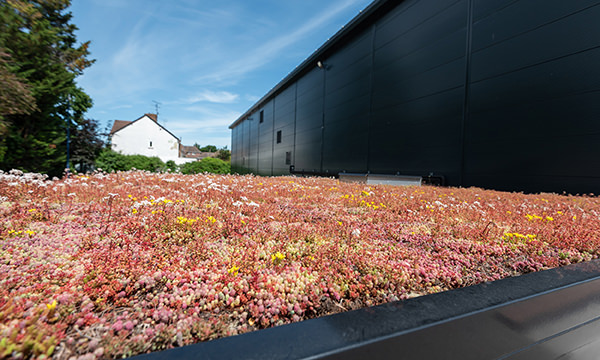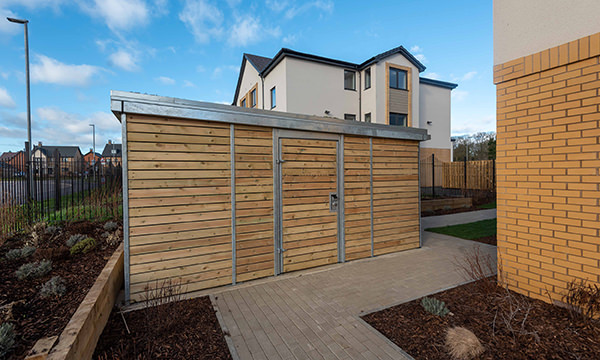Introduced through the Environment Act, Biodiversity Net Gain is a fundamental part of efforts to create higher-quality natural habitats and green spaces, requiring all developers in England to deliver on the 10% BNG target for new housing, commercial and industrial developments.
The first set of statutory instruments (SI), mandating the 10% net gain on all sites, were approved by a legislation committee in early January. However, following a second delay from the UK Government, the new Biodiversity Net Gain rules and regulations finally came into effect on February 12th, 2024.
Biodiversity Net Gain will continue to apply to all developers, local planning authorities and land managers wanting to sell in the BNG market. In the following article, urbanspec provides guidance on achieving the 10% net gain, and why specifying green roofs on external storage buildings can be valuable for achieving this target.
How Will Biodiversity Net Gain Be Measured?
Measured in biodiversity units, the statutory metric tool will be a requisite for assessing how many units existed in a habitat pre-development, measured in aspects such as size, quality, location and type. The tool can then be used to determine the amount required to restore biodiversity on-site, and the options available to achieve the 10% target.
How Can the 10% Target Be Achieved?
Primarily, through enhancing on-site biodiversity. Developers can generate off-site biodiversity gains on land they own elsewhere if the 10% target can only be partly achieved on-site. The principle of BNG is based on Mitigation Hierarchy, which means developers should first strive to avoid impacting biodiversity primarily, followed by minimising impact and, as a last resort, compensate in the event losses cannot be avoided. For all off-site gains, BNG must be maintained for a minimum 30 years.
Which Building Features Deliver the Highest BNG?
Living walls and green roofs are currently some of the most effective solutions for delivering the 10% BNG target on land developments. CIEEM outlines several measures for incorporating biodiversity features as part of good practice principles on a development, specifically naming green roofs and living walls.
How Are Green Roofs Measured for BNG?
To assess the quality of a green roof and its output in regard to developing new habitats, the biodiversity metric utilises a specific criteria to assess the distinctiveness, condition and strategic significance of a green roof unit.
- Distinctiveness: The metric automatically assigns a distinctiveness category based on the habitat type and its distinguishing features. Distinct and rare habitats with a dense collection of plant life will score higher than a more common green roof with mostly moss and grass.
- Strategic significance: The significance of the habitat will be based on its location and habitat type. For green roofs that have been identified within a strategy as being ecologically significant for the habitat type, a high score is achieved.
- Condition: The state of a habitat, often linked to past and present management. This is a way of measuring variation in the quality of habitat against others of the same habitat type to ensure they meet the correct standard.
Why Incoporate Green Roofs on External Storage Buildings?
Specifying a green roof ensures BNG targets can be attained without the complexity of design and construction processes typically associated with a bespoke build. External storage buildings can be designed to incorporate extensive or intensive green roof systems, and are available as sedum only, and sedum and wildflower.
By introducing valuable pockets of biodiversity into new developments, green roof structures hold the potential to introduce hundreds of plant and wildlife species in just a few square metres, helping to restore ecosystems where habitats have been eroded by urban development, and achieve biodiversity gains.
Maintenance requirements for green roofs can also be minimal, facilitating the requirement for some habitats to be maintained for a minimum 30-year period. From a visual perspective, a green roof design can help the structure to blend in with its surrounding environment, coordinate with green spaces on a development, and soften the urban landscape.





